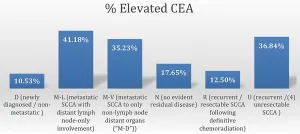"Our study results should bring urgent attention to this insidious yet rapidly growing form of severe heart failure - methamphetamine-related heart failure, which is taking the lives of young people, straining health care resources and threatening to spread like wildfire in California, the West and to the rest of the nation," said lead author Susan X. Zhao, M.D., a cardiologist at Santa Clara Valley Medical Center in San Jose, California. "California is seeing a resurgence of methamphetamine use, and the problem has been made drastically worse in recent years by the increase in purer, more potent methamphetamine throughout our communities."
Heart failure is a chronic condition in which the heart becomes too weak to properly pump blood. Signs of heart failure include fatigue, shortness of breath and heart palpitations. According to the American Heart Association's Heart Disease and Stroke Statistics--2021 Update, an estimated 6 million American adults ages 20 and older have heart failure based on 2015-2018 data. The condition is most prevalent among people ages 60 and older.
Methamphetamine, also known as meth, is an addictive stimulant that can affect the cardiovascular system by triggering blood vessel spasms and life-threatening spikes in blood pressure. It can also increase plaque in the arteries and rewire the heart's electrical system. Prolonged methamphetamine use has been associated with a severe form of dilated cardiomyopathy, a condition in which the weakened heart muscle becomes enlarged and cannot pump adequate blood. According to the 2017 U.S. National Survey on Drug Use and Health, 1.6 million people reported using methamphetamines, and the average age of new methamphetamines users was 23.
This study is a retrospective review of California hospital data including more than one million patients discharged between 2008 and 2018 with a diagnosis of heart failure. During that 11-year period, researchers noted:
42,565 (4%) of the patients had been diagnosed with methamphetamine-related heart failure - also known as MethHF - compared with 990,511 (96%) diagnosed with heart failure unrelated to methamphetamine use. Hospitalizations for methamphetamine-related heart failure rose 585%, while heart failure hospitalizations unrelated to methamphetamine use declined 6%. 94% of methamphetamine-related heart failure patients were under age 65, with more than half being between ages 35 and 54. 79% of methamphetamine-related heart failure patients were men, and nearly half of methamphetamine-related heart failure patients were white adults. Methamphetamine-related heart failure patients were also more likely to consume alcohol and use tobacco and other illicit drugs. They were more likely to be homeless compared with other heart failure patients, as well. People with methamphetamine-related heart failure had fewer pre-existing cardiovascular conditions such as atrial fibrillation or Type 2 diabetes, though, more had high blood pressure (33%) compared to heart failure patients who did not use methamphetamines (30%). Researchers found that the financial toll of methamphetamine-related heart failure is also significant: hospital stays were several days longer than those of other heart failure patients, and they had more procedures performed, leading to significantly higher health care costs. Hospitalization costs for methamphetamine-related heart failure in California rose 840%, from $41.5 million in 2008 to $390.2 million in 2018, compared with an 82% increase in costs for all heart failure-related hospitalizations, which rose from $3.5 billion to $6.3 billion.
"Treating patients with methamphetamine-related heart failure is consuming resources and burdening the health care system," Zhao said. "Many patients present late in the course of illness with limited options available to them. Proactive, preventative public health outreach and education are needed to stem the influx of methamphetamine-related heart failure at its source."
Zhao said while methamphetamine-related heart failure may be seen as a "working class white men's disease", the demographics are shifting and diversifying, among people from different racial and ethnic groups and women, too. Methamphetamine-related heart failure is also spreading from urban areas to rural communities.
"The methamphetamine epidemic is often overshadowed by the surge in opioid-related death and illnesses," she said. "The long-term health consequences associated with methamphetamine use require recognition from the public as well as the clinical communities. This study was intended more as a public health alarm: the urgency of methamphetamine use disorder cannot be overstated."
An accompanying editorial by Uri Elkayam, M.D., and Pavan Reddy, M.D., commented that the inattention to methamphetamine-related heart failure may be due in part to a lower risk of immediate death caused by methamphetamine overdose as compared to opioids. However, they note methamphetamines are "equally dangerous and costly to society but more insidious in nature, its effects potentially causing decades of mental and physical debilitation before ending in premature death."
According to the editorial, "The rising prevalence of MethHF should ring alarm bells but also signals an opportunity. "Until recently, MethHF was highlighted only in the form of isolated case reports but is now seen regularly in high usage areas. Though this study makes strides in underscoring the potential societal impact of this protracted illness, prospective data from larger cohorts may help clarify questions left unanswered by the current study. Importantly, we do not know which risk factors predispose to the development of MethHF, which prognostic factors may predict cardiac recovery or which medical therapies may benefit patients. Additional understanding may simultaneously benefit the patient and alleviate spiraling healthcare costs."
Zhao and colleagues plan to work with public health agencies to develop a statewide awareness campaign in California and to examine national data to determine if it reflects what's happening at the state level, she added.
This study is limited in that it is a retrospective review of hospital discharge data based on a standardized coding system that may be susceptible to biases and confounding factors, including that certain groups of patients may be asked about drug habits more than other groups.
INFORMATION:
Co-authors are Andres Deluna, M.D., M.P.H.; Kate Kelsey, M.P.H.; Clifford Wang, M.D., M.P.H.; Aravind Swaminathan, M.D.; Allison Staniec, Ph.D.; and Michael H. Crawford, M.D. The authors' disclosures are detailed in the manuscript.
The study received no external funding.
Additional Resources:
Available multimedia is on right column of release link - https://newsroom.heart.org/news/methamphetamine-use-drove-surge-in-heart-failure-hospitalizations-costs-in-california?preview=7c862571ef69d1147e6619549a151071
After July 14, view the manuscript and editorial online.
Meth and heart disease: A deadly crisis we don't fully fathom, report says
Meth use producing younger, harder-to-treat heart failure patients
Stopping meth helps reverse drug-induced heart failure
Illegal Drugs and Heart Disease
Follow AHA/ASA news on Twitter @HeartNews
Follow news from the AHA's Circulation: Cardiovascular Quality and Outcomes journal @CircOutcomes
Statements and conclusions of studies published in the American Heart Association's scientific journals are solely those of the study authors and do not necessarily reflect the Association's policy or position. The Association makes no representation or guarantee as to their accuracy or reliability. The Association receives funding primarily from individuals; foundations and corporations (including pharmaceutical, device manufacturers and other companies) also make donations and fund specific Association programs and events. The Association has strict policies to prevent these relationships from influencing the science content. Revenues from pharmaceutical and biotech companies, device manufacturers and health insurance providers and the Association's overall financial information are available here.
About the American Heart Association
The American Heart Association is a relentless force for a world of longer, healthier lives. We are dedicated to ensuring equitable health in all communities. Through collaboration with numerous organizations, and powered by millions of volunteers, we fund innovative research, advocate for the public's health and share lifesaving resources. The Dallas-based organization has been a leading source of health information for nearly a century. Connect with us on heart.org, Facebook, Twitter or by calling 1-800-AHA-USA1.



